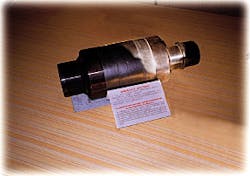Small, thermally set packers are being used in China for injecting steam into selective intervals during cyclic-steam operations (Fig. 1).Thermally activated packers are helping recover heavy oil in cyclic steam-injection wells in China.
The packers were developed by one of the units of the Liaohe Petroleum Exploitation Bureau (LPEB).
These packers replace the mechanically and hydraulic-set packers used during the 1980s. The new packers are small in size (Fig. 1 and Fig. 2 [22,345 bytes]), and LPEB has found them to have reliable sealing properties.
Multiple packers can be run in a well. In the Liaohe area, as many as four packers have been set in one well.
One unique feature is that the packers are set by the temperature increase during steam injection. According to LPEB, the packers will seal at 200° C., have a working temperature of 360° C., and a design limit of 400° C. The packers will unset when the temperature drops below 100° C.
In the Liaohe area, these packers are installed when it is required to inject steam into a selective interval or for allocating steam to different intervals.
At present, the Liaohe fields have about 4,500-5,000 injection cycles/year. Of these cycles, about 500 require selective injection.
Fig. 3 [17,242 bytes] shows a typical completion with one packer.
Copyright 1998 Oil & Gas Journal. All Rights Reserved.


